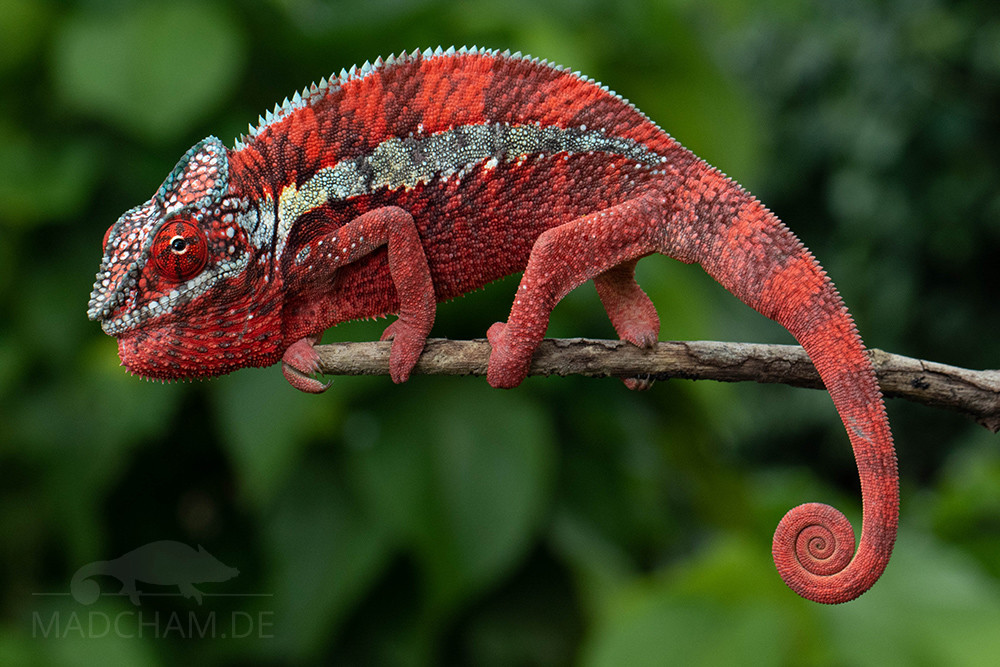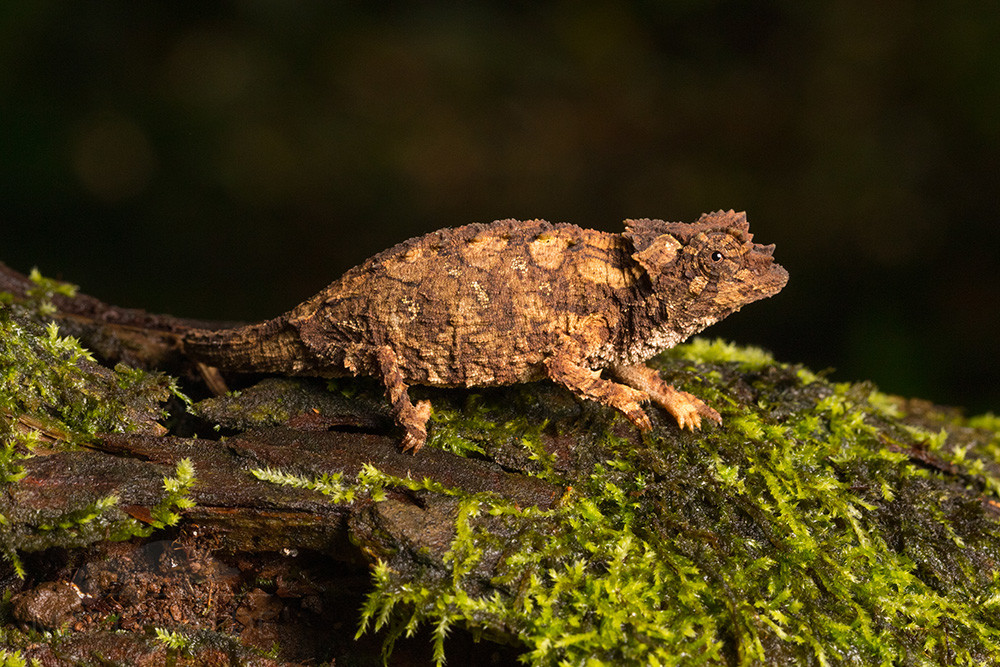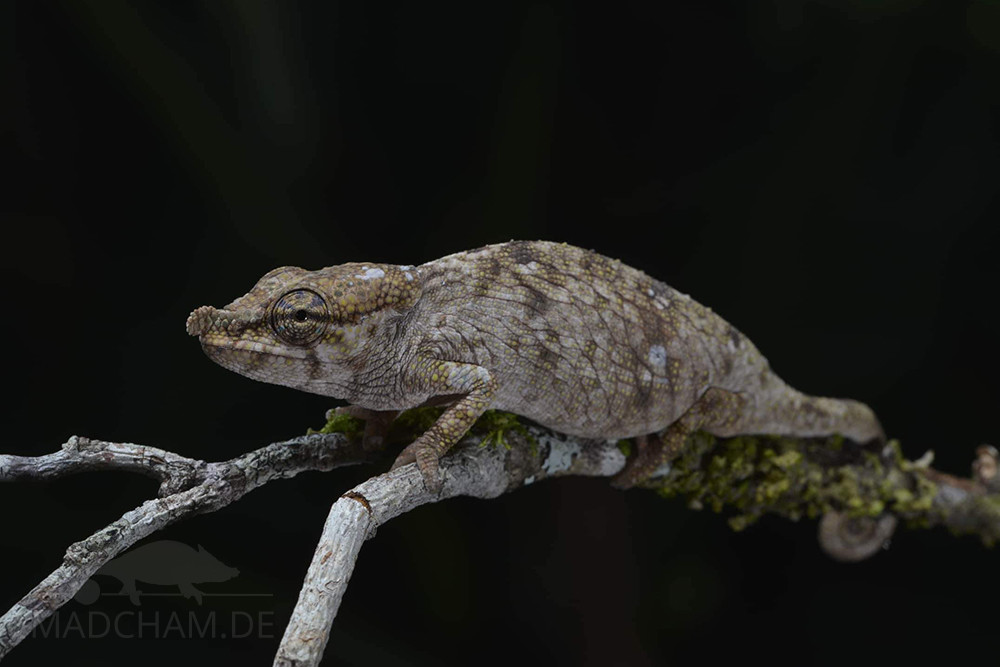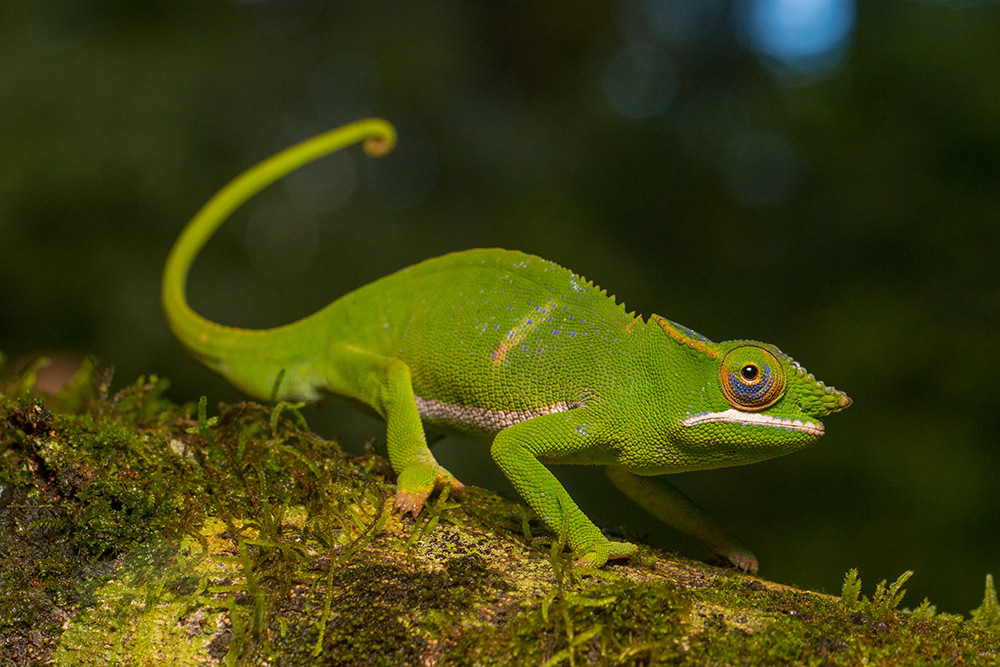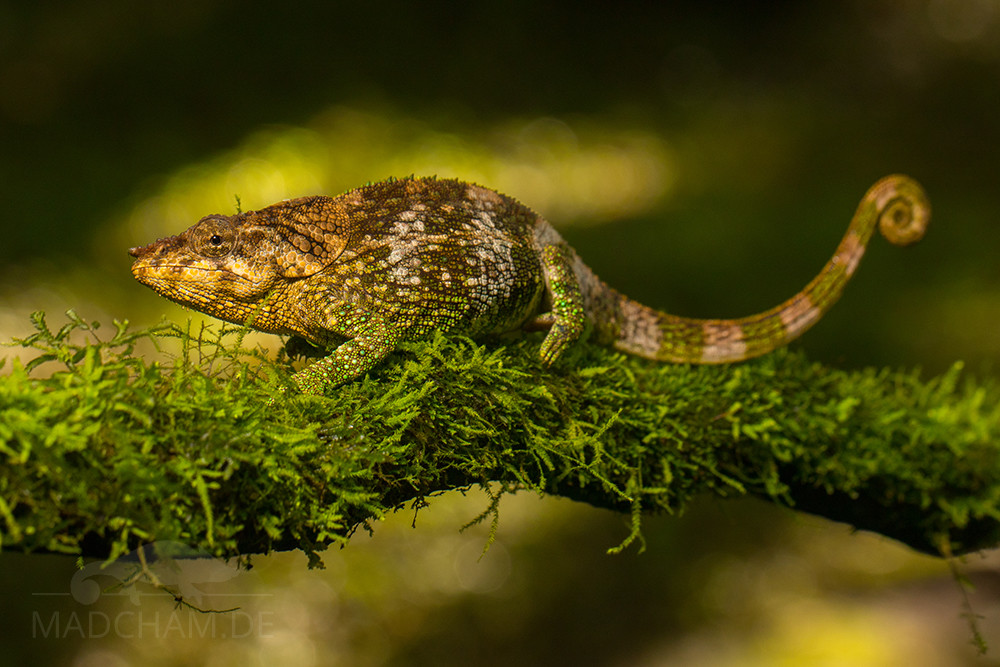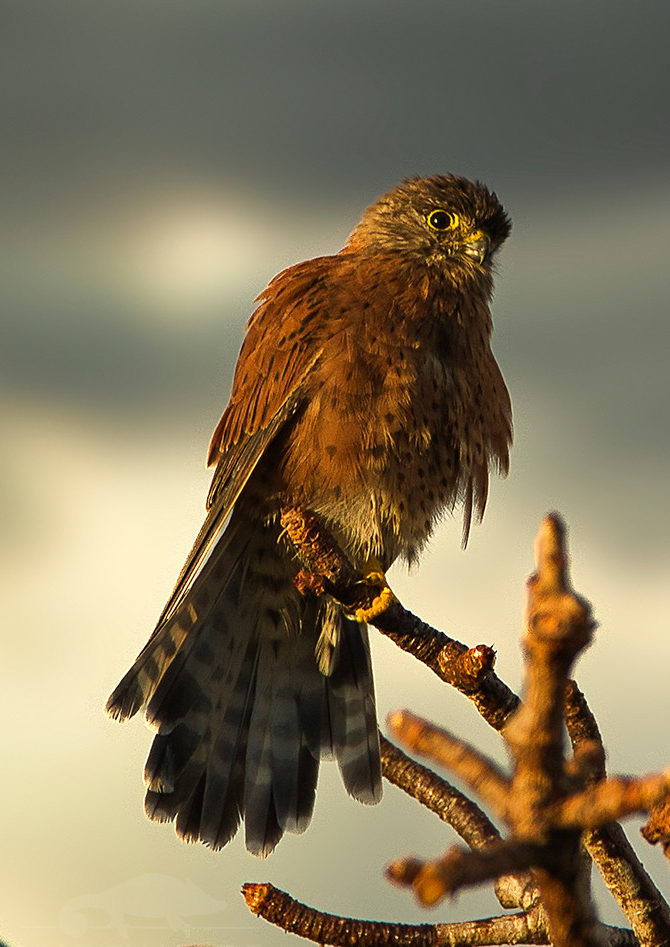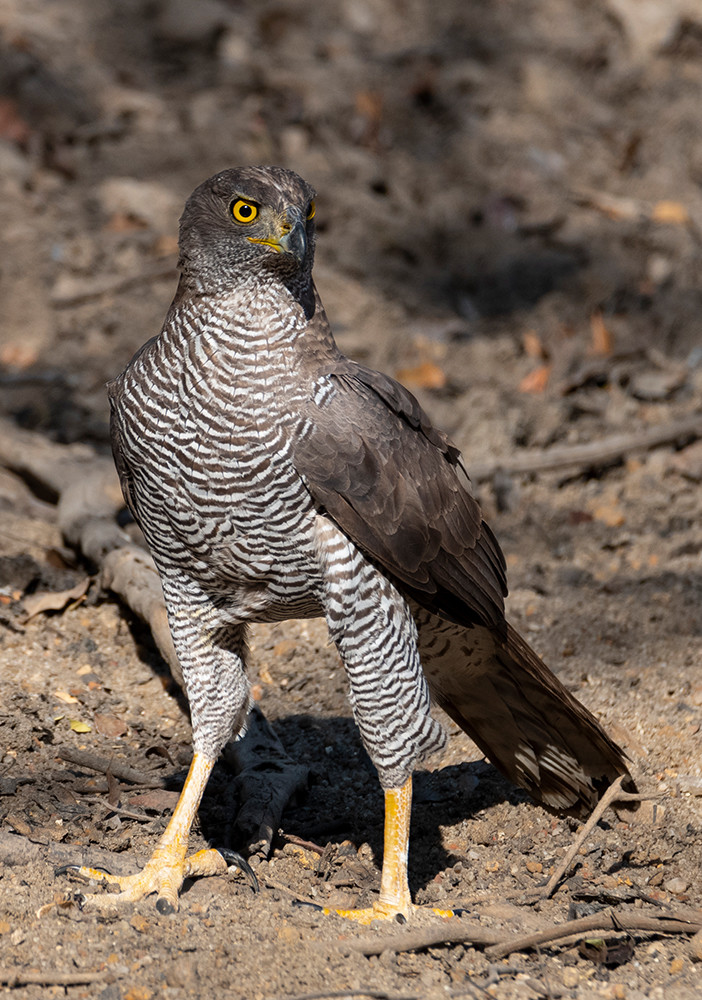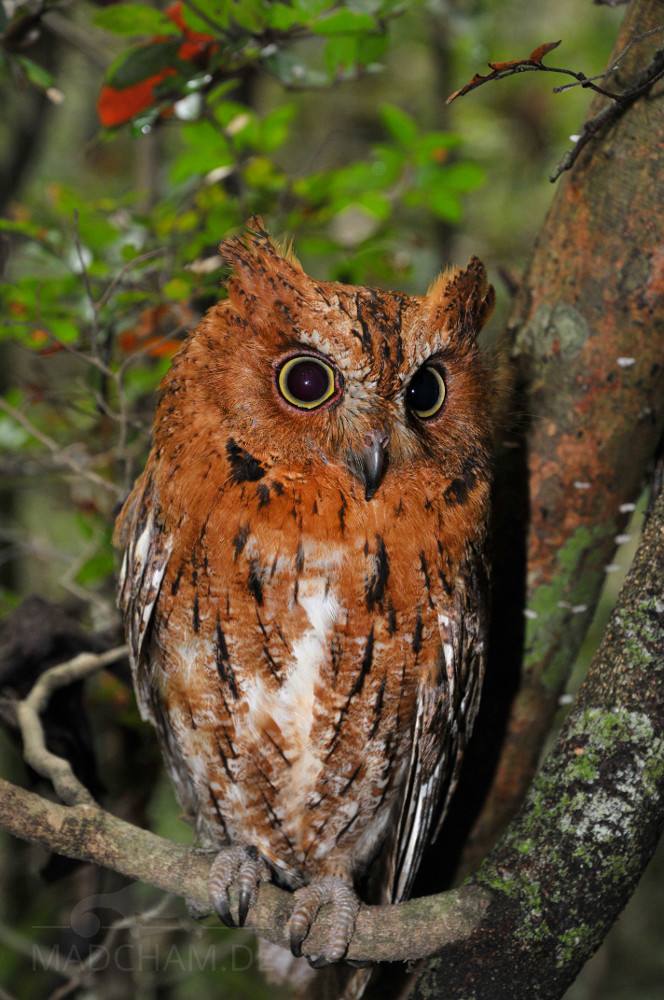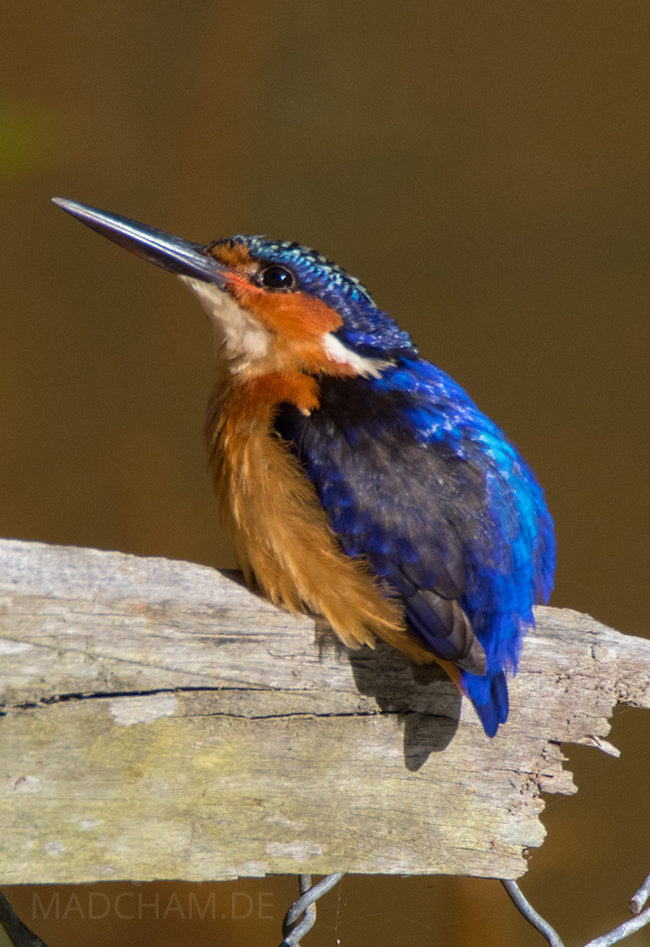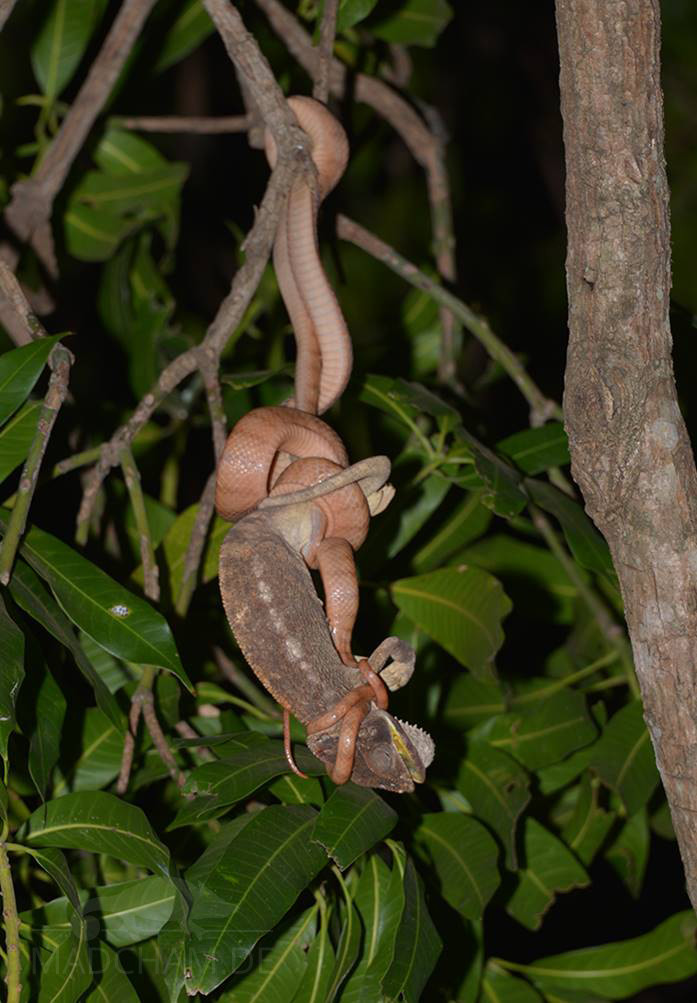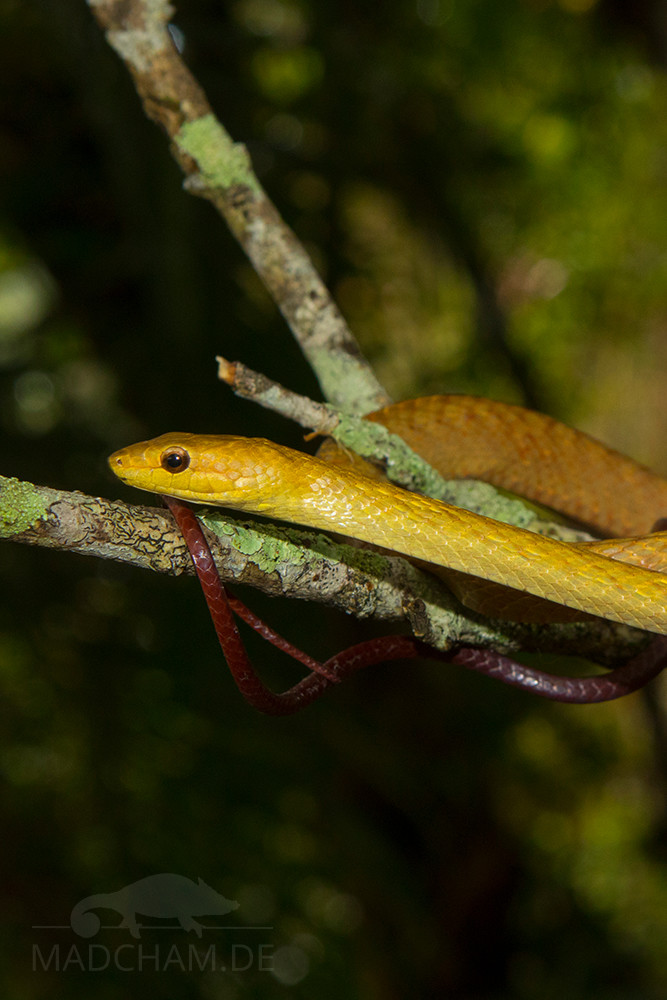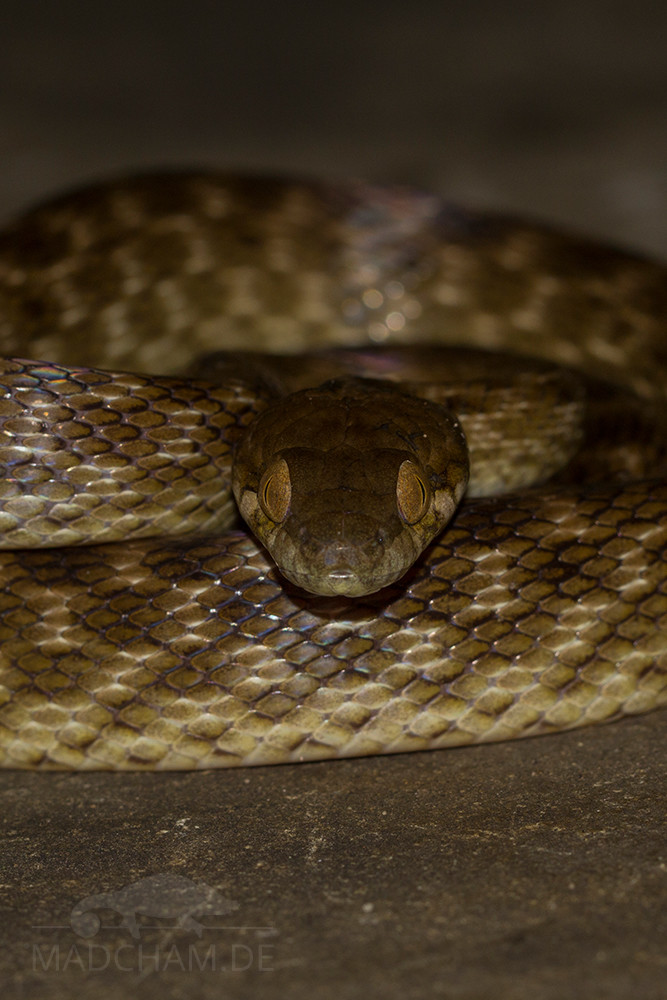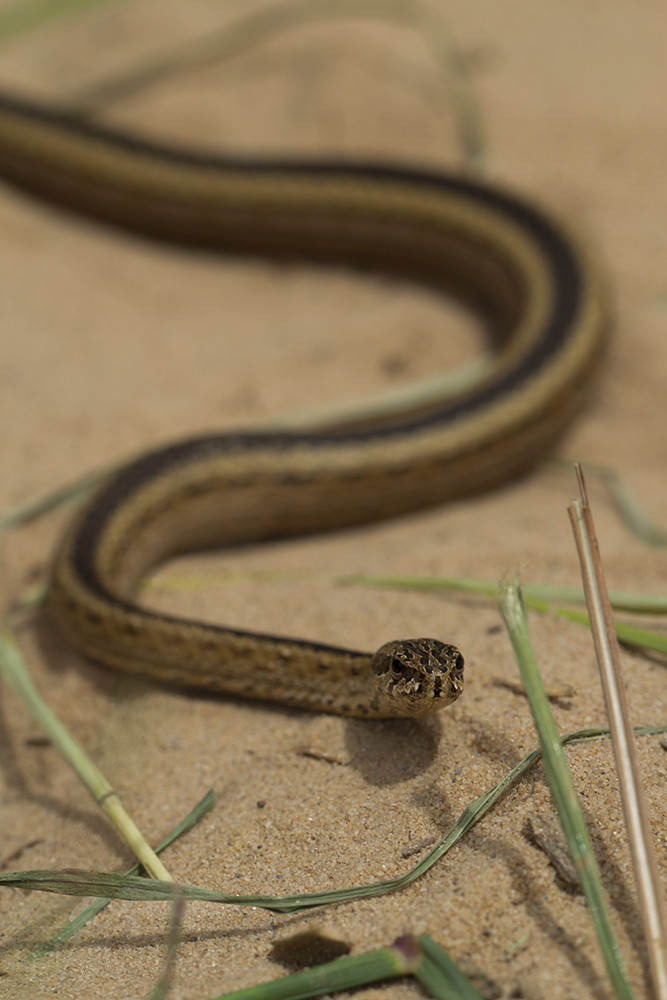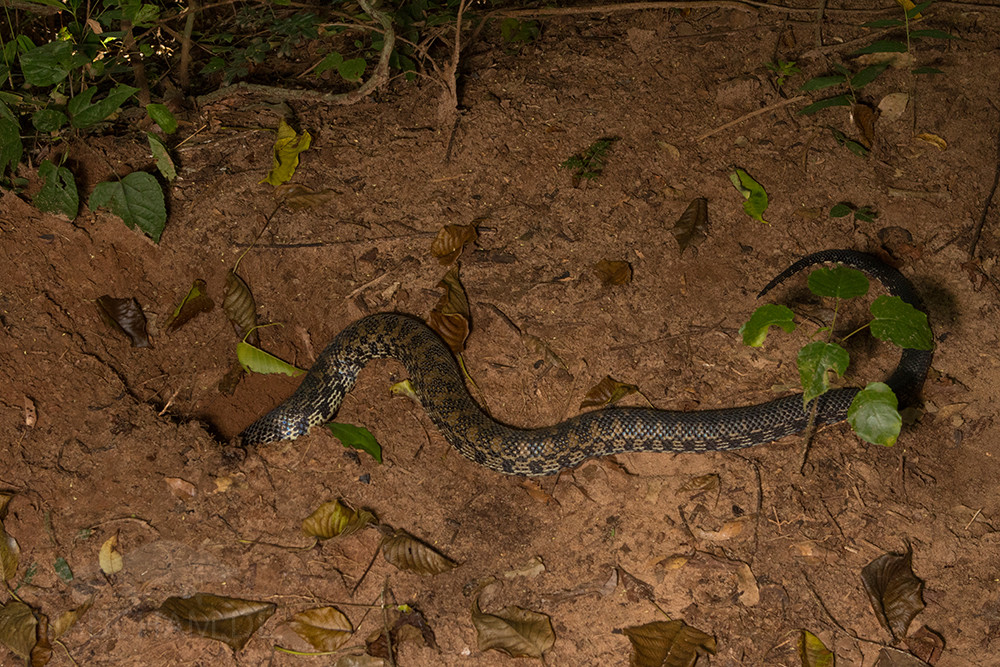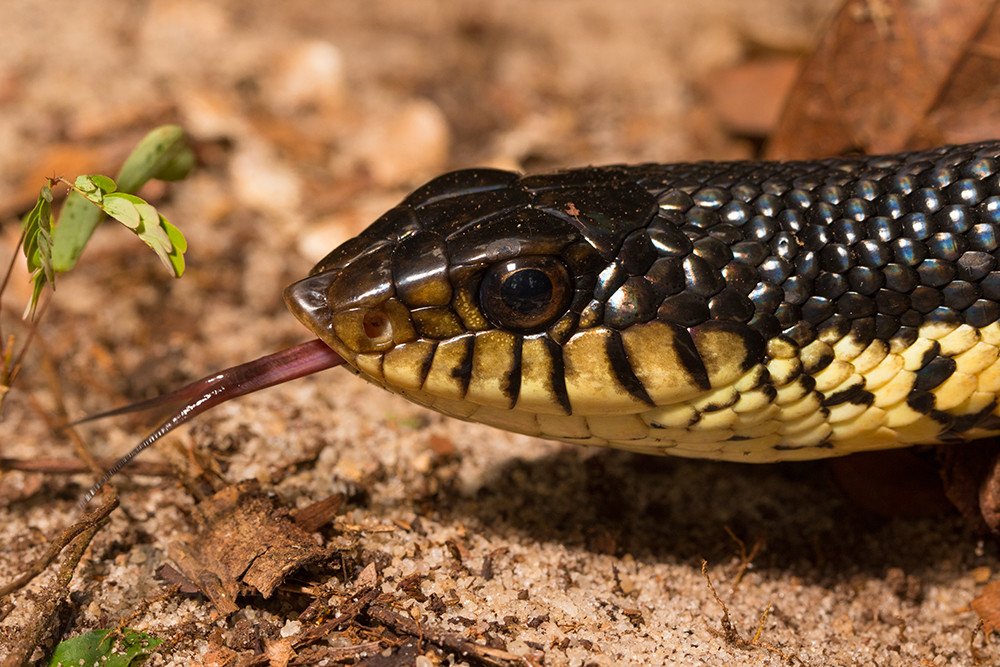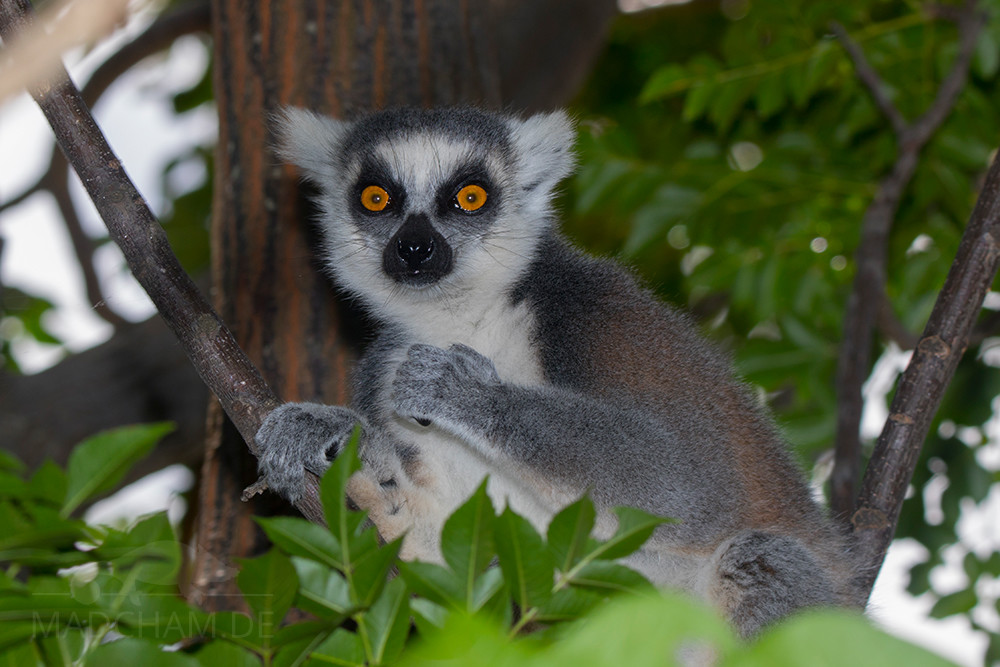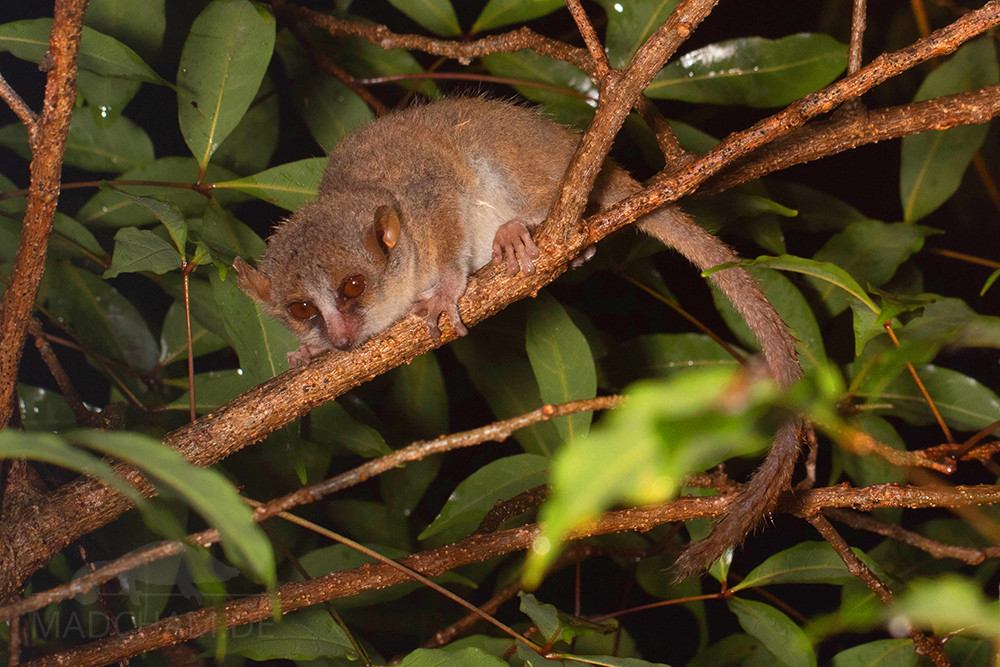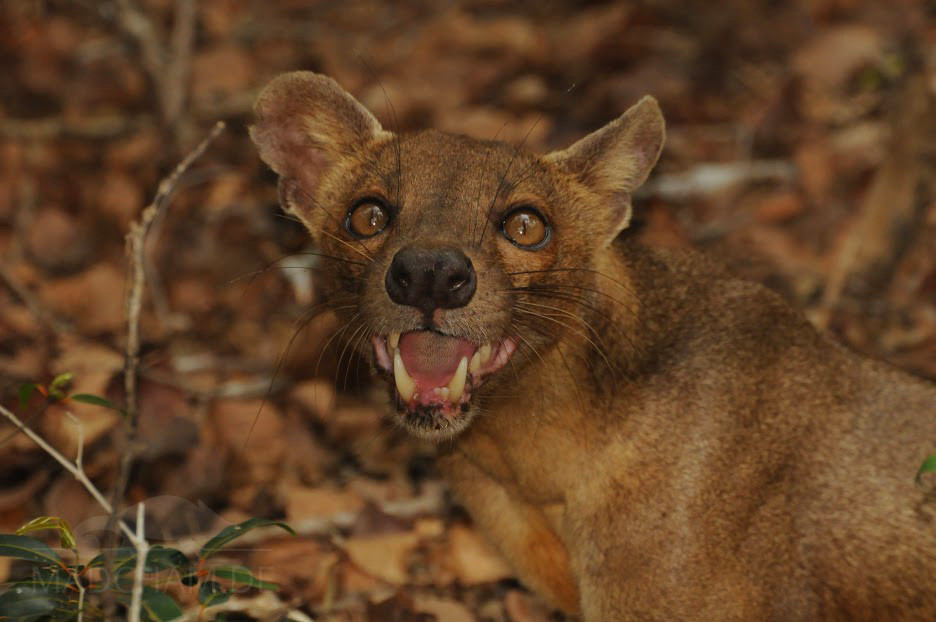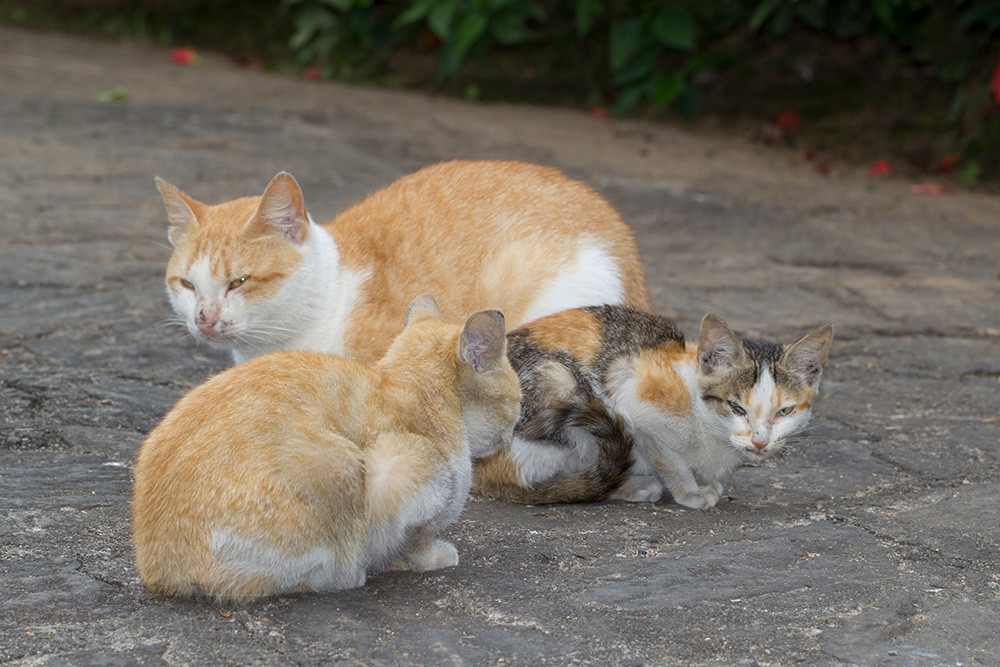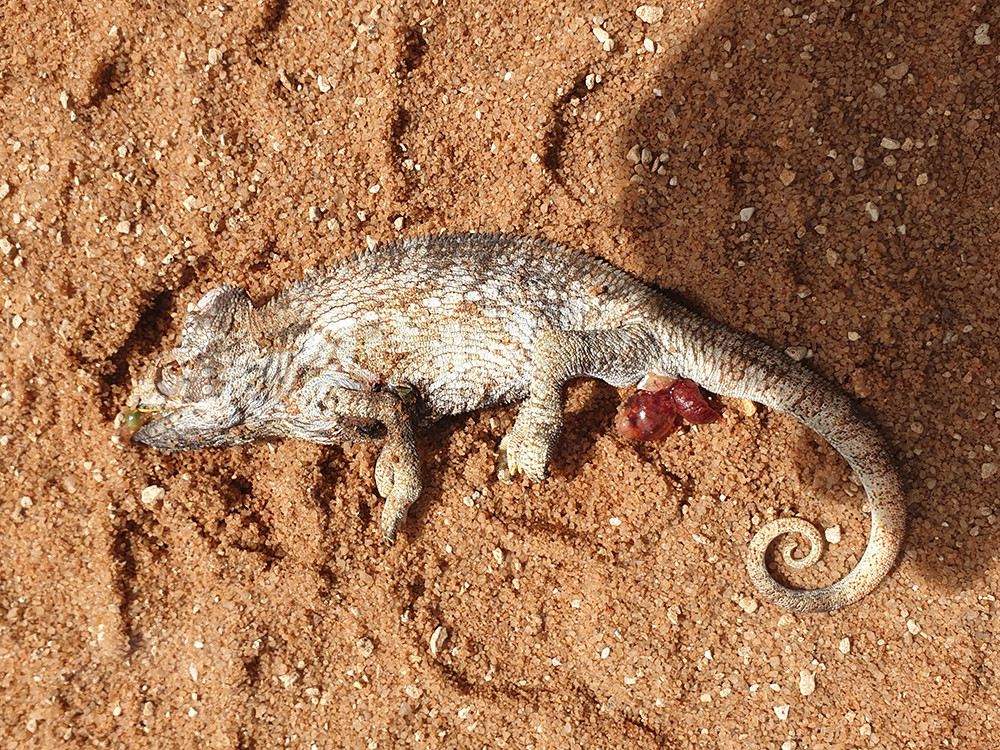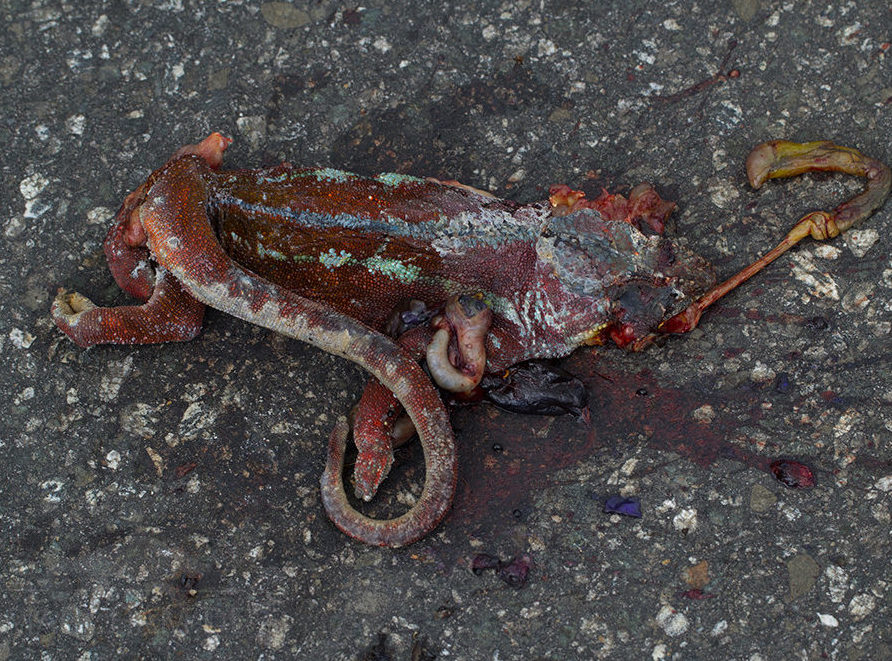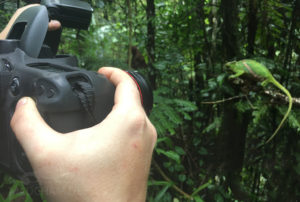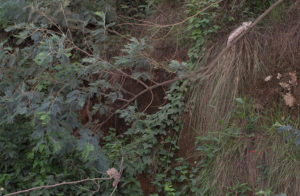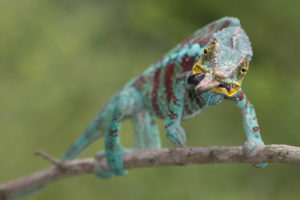The knowledge about predators of Malagasy chameleons comes mainly from anecdotal reports and so far less systematic research. Also, we observe from time to time how chameleons become victims of other animals in the wilderness of Madagascar. Jenkins, Rabearivony, and Rakotomanana have published the only overview on this topic so far in 2009. It can be assumed that in Madagascar chameleons are mainly eaten by birds and snakes.
Among the birds, two birds of prey are particularly noteworthy: The Serpent-Eagle (Eutriorchis astur) and the Banded Kestrel (Falco zoniventris). Chameleons seem to make up a very large part of the diet of these two species. Both hunt mainly in treetops, which predestines chameleons as tree-dwellers for suitable food. In the Serpent-Eagle, it was observed during a breeding time in the rainy season that 83% of the prey consisted of chameleons and geckos. Serpent-Eagles usually sit on a perch and observe the surroundings from there. If they discover worthwhile prey, they fly towards it and grab the prey with their strong claws. Chameleons are usually pierced and killed. With the prey, the Eagles fly back to their perch to eat piece by piece. Several reports are also known of Madagascar Buzzard (Buteo brachypterus), Frances’ Goshawk (Accipiter francesii), Hooked-billed Vanga (Vanga curvirostris), Madagascar Harrier (Circus macrosceles) and Harrier-Hawk (Polyboroides radiatus) as well as Peregrine Falcon (Falco peregrinus), in which these birds have preyed on chameleons as food.
Reports of only single observed attacks on medium and large chameleons are known from Long-eared Owl (Asio madagascariensis), Red Owl (Tyto soumagnei), Helmet Vanga (Euryceros prevostii), Bernier’s Vanga (Oriolia bernieri), White-headed Vanga (Leptoperus viridis) and Malagasy Kestrel (Falco newtoni). Even the beautiful Blue Couas (Coua caerulea) and the very small Madagascar Pygmy Kingfisher (Corythornis madagascariensis) have been caught with small chameleons as prey. Nocturnal birds rarely seem to catch a chameleon – probably because chameleons sleep at night and are more difficult to spot motionless. Leaf chameleons are less likely to fall prey to birds. But even these small and inconspicuous chameleons have been attacked and eaten by correspondingly small birds that forage on the ground in the foliage, namely Short-legged and Pitta-like Ground Rollers (Brachypteracias leptosomus and Atelornis pittoides).
The most common snake eaters are the Common Big-Eyed Snake (Mimophis mahfalensis), Ithycyphus perineti or Ithycyphus oursi and Madagascarophis colubrinus. All four species find chameleons directly in trees and on the ground. Chameleons are also a regular part of the diet of various snakes of the genus Phisalixella (formerly Stenophis) and Parastenophis (Ph. variabilis, Pa. betsileanus). All the snakes mentioned kill their victims with a bite, while secretion from the so-called Duvernoy glands runs into the wound. The Duvernoy glands are a kind of “primitive precursor” of real venom glands. The poison produced in these glands is not particularly potent. In Common Big-Eyed snakes, Phisalixella and Parastenophis, it is released through fangs that are located far back in the jaw, approximately under the eyes. For large mammals such as humans, the venom of the Malagasy colubrids is rather harmless and can be compared to a wasp sting. Chameleons, however, may be paralyzed by the effect of the secretion and even be killed. As far as has been investigated so far, the poison is a haemotoxin, which means it destroys blood cells. Madagascar is also home to several constrictor snakes, but they seem to care less about chameleons than about other prey.
We have already observed several times that snakes killed or strangled chameleons by bite, but could not swallow them because of their size. It seems that every now and then chameleons become victims of snakes that simply overestimate their abilities. But the dead chameleons do not remain lying around for long – they are broken down into smaller pieces and decimated by insects, birds, or other reptiles quite quickly. By the way, the first photo from the left in the following row shows exactly such a situation: A Phisalixella variabilis entangled a Furcifer oustaleti and killed it with a bite near its head. After the chameleon was dead, the snake tried to devour it. After a good half hour, it stopped, because the chameleon simply did not fit between the jaws. The next day, all that was left of the body of the Furcifer oustaleti were single bones and some skin.
Some snakes simply eat what they can find – preferably eggs buried in the ground, and now and then a live chameleon. Among these snakes are the Malagasy Giant Hognose Snake (Leioheterodon madagascariensis) and Pseudoxyrophus ambreensis. They burrow headfirst into the sand or the ground to find fresh clutches. In the photo, a Hognose Snake has apparently just found a chameleon clutch in the dry forest of Ankarafantsika. The eggs are slit in the mouth with the teeth so that the yolk and yolk can be digested. The eggs of chameleons in the ground are generally susceptible to predators. These do not even have to be snakes. Even certain species of ants can destroy chameleon eggs.
It is interesting that even frogs rarely eat chameleons in the rainy season. In particularly rainy years, hatchlings may end up in the stomach of the grass frog (Ptychadena madagascariensis) or Mantidactylus femoralis. Probably other frogs also reach for chameleon hatchlings when they get the chance – but it has been observed very rarely so far. Very small chameleons are also occasionally captured by praying mantises and large spiders.
Lemurs also rarely eat chameleons – probably only when a very good opportunity arises. Ring-tailed lemurs, mouse lemurs, and fat-tailed dwarf lemurs have been observed to eat chameleons. Actually these lemurs prefer fruits, flowers, and leaves. Mouse lemurs and fat-tailed dwarf lemurs supplement their diet with insects. In the dry season, however, the supply of fresh greenery and insects is rather limited in the southern parts of Madagascar. A chameleon is then just the right “stopgap”. It is striking that lemurs often left a large part of their unusual prey unused during observations. This suggests that chameleons are neither a main meal nor a particularly common prey for lemurs. Perhaps chameleons simply do not appeal to lemurs. However, it is also possible that lemurs kill chameleons more out of curiosity and for “trial and error” than out of hunger.
Another Malagasy mammal that occasionally makes use of the chameleon population is the approximately knee-high Fossa, the largest predator on the island. Fossas are cathemeral, i.e. active during the day and/or night, depending on their needs. They can easily climb trees and find chameleons there. Opportunistic hunters such as the ring-tailed mongoose (Galidia elegans), Grandidier’s mongoose (Galidictis grandidieri), the Fanaloka (Fossa fossana) or various species of tenrecs do not spurn a chameleon from time to time either. Tenrecs mainly browse in foliage, so their victims are mainly leaf chameleons.
Introduced domestic cats and Norway rats are also an increasing threat to chameleons in Madagascar. Cats are often fed even by the poorest Madagascans but are not neutered, which is why they reproduce uncontrolled on the island. We have already been told by several Madagascans that cats sometimes even “specialize” in digging chameleon females and specifically search the ground for egg-laying chameleons in order to kill them. They do not only kill “unwanted” rats and mice in houses but also murder amphibians, reptiles, and birds very successfully. Cats are, therefore, unfortunately, an increasing problem factor for the native species diversity in Madagascar. The following photos were taken in Andasibe, Ambilobe, and Sambava. We would have hundreds more. Even in the most remote regions of Madagascar, stray domestic cats have become native. Rats mainly prey on eggs, which they dig up, eat, and destroy.
By the way, although humans are not “real” predators, they are the biggest problem for chameleons in Madagascar. Many chameleons are losing their habitat due to slash-and-burn agriculture and logging by human hands. Not all species are able to survive in secondary vegetation without problems. Many Malagasy chameleon species depend on special habitats such as intact rainforest at a certain altitude or intact spiny forest. Man has been destroying these chameleon habitats in Madagascar for many decades. Even designated protected areas are threatened with destruction because of the high and almost unstoppable poverty on Madagascar. And humans also kill by moving around: chameleons are regularly run over on Madagascar’s roads. Even though these are usually not rare species, the affected chameleons have died unnecessarily.

